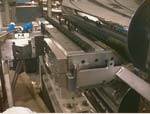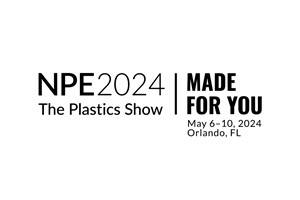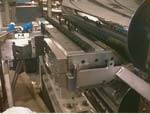SPI revises extrusion, injection molding automation safety standards
Advances in technology, particularly controls, have prompted SPI to update some machinery safety standards.
Share
Safety standards covering elements of sheet extrusion and the use of automation with injection molding have been revised, updating guidelines last modified in 1999 and 2003, respectively, in a bid to keep pace with evolving technologies. (SPI), which announced the revisions in conjunction with the (ANSI), called the changes “significant and substantive.”
Dave Felinski, SPI’s Standards Program Coordinator, told Plastics Technology that both updates were meant to address advances to safeguarding devices and controls since the standards were originally written.
Felinski said that while the (OSHA) was not directly involved in the development of either standard, both were “developed to ensure there were no conflicts with OSHA regulations which are minimum requirements.”
ANSI/SPI B151.20 – 2013, Safety Requirements for Plastics Sheet Production Machinery, updates the latest concepts in general machine safety specifically applied to sheet production machinery, according to Felinski.
“Perhaps the most significant addition is the incorporation of risk assessment and risk reduction principles in the design and construction as well as user sections of the standard,” Felinski said.
ANSI/SPI B151.27 – 2013, Safety Requirements for the Integration of Robots with Injection Molding Machines, also seeks to address advances to safeguarding devices and controls, according to Felinski.
“More importantly the revisions to B151.27 include additional requirements while teaching within perimeter guarding,” Felinski said, adding that they also address resetting perimeter safeguarding devices.
“The B151.27 standard has updated requirements in the area of risk assessment and risk reduction, consistent with the recent ANSI machinery safety standards dealing with those concepts, and far more current than the ISO standard on those principles,” Felinski explained.
Injuries, fatalities on the decline
Except for 2011, the accident incident rate in the U.S. has shown “statistically significant declines” for the last decade, according to the . In 2012, which is the most recent year data are available for, the incidence rate of nonfatal injuries and illnesses for manufacturing came in at 4.3, ahead of natural resources and mining (3.8) and construction (3.7).
Within manufacturing, plastics and rubber products manufacturing posted a rate of 5.0, lower than food (5.4), wood product (6.5), and primary metal (6.2) manufacturing but higher than paper (3.0) and chemicals (2.3) production.
There were 4383 total fatalities in 2012, according to preliminary data, with the total number of fatal work injuries having dropped in 13 of the last 21 years going back to 1992. Manufacturing had a total of 314, compared to 475 in agriculture, forestry, fishing and hunting; 177 in mining, and 775 in construction.
Of the 314 in manufacturing, a majority (101) came from contact with objects and equipment. There were 11 fatalities within plastic and rubber products manufacturing in 2012, with nearly half of those (five) related to contact with objects and equipment.
The estimates that there are 2.34 million occupational fatalities every year globally. Of those, only 321,000 are due to accidents, with the remaining 2.02 million caused by work-related diseases.
ANSI/SPI B151.20 Safety Requirements for Plastic Sheet Production Machinery
This standard applies to Plastic Sheet Production Equipment and also specifies safety requirements relating to the design and construction of multi-roll calendars intended for the processing of plastics and concerns the calendar including all components fixed. The purpose of this standard is to identify and address known hazards to personnel working on, or adjacent to, the plastic sheet production machinery. Safety requirements of ancillary equipment and dies used with plastic sheet production machinery are not covered by this standard.
ANSI/SPI B151.27 Safety Requirements for the Integration of Robots with Injection Molding Machines
This standard applies to all robots used on or within the guarded area of Injection Molding Machines (IMMs). Machinery suppliers and users shall use the risk assessment process in the manufacture, care, and use of the machinery. Deviations from the requirements of this standard shall be based on a documented risk assessment. The purpose of this standard is to establish safe practices and procedures for the integration and use of robots operated within the guarded area(s) of the IMMs. A robot(s) that is located outside the guarded area(s) of the IMM is not included in the scope of this standard.
Related Content
Paperless ‘Smart Factory’ Based on Automated Production Monitoring
Tier 1 automotive molder’s home-built production-monitoring and ERP systems, designed for “the little guy,” boost its efficiency rating and profits.
Read MorePolyJohn Turns to Blow Molding, Doubles Its Productivity
Leading maker of portable sanitation products knew thermoforming, sheet extrusion, rotomolding and injection molding. Then it found the missing link to higher productivity and new markets: blow molding.
Read MoreBMW Group Vehicle to Adopt 3D Printed Center Console
A vehicle coming to market in 2027 will include a center console carrier manufactured through polymer robot-based large-format additive manufacturing (LFAM).
Read MoreProcessing Megatrends Drive New Product Developments at NPE2024
It’s all about sustainability and the circular economy, and it will be on display in Orlando across all the major processes. But there will be plenty to see in automation, AI and machine learning as well.
Read MoreRead Next
Can Your Sheet Lines Meet New ANSI Safety Standards?
The new standard relates to the design and use of the take-off equipment. Its biggest impact will be to require older sheet roll stacks to be extensively rebuilt or replaced in order to meet new emergency nip-opening requirements.
Read More










